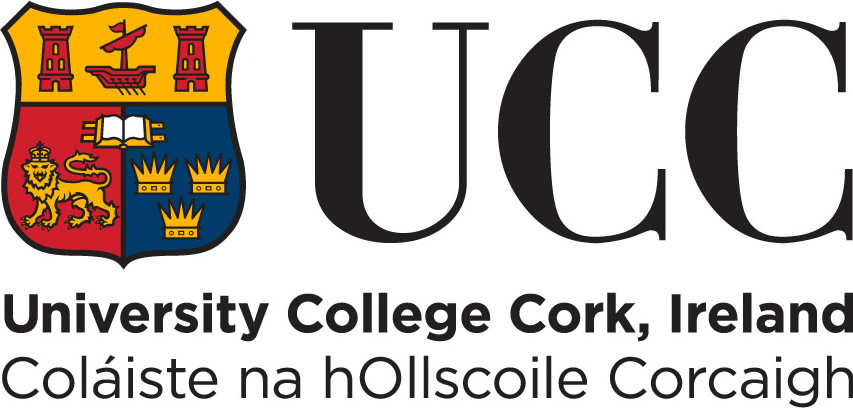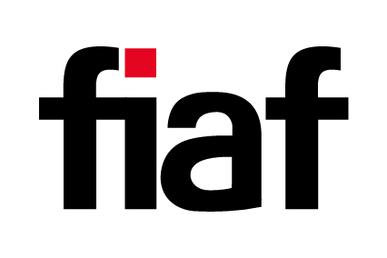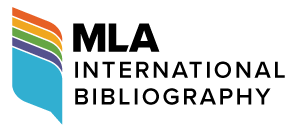But HOW Is It Not Just Practice?
Or Do I Not Know Practice as Research?Julian McDougall
This article shares experiences from editing an academic journal publishing media practice research, supervising and assessing doctoral media practice research and reviewing media practice research (including elements of my own work) against prescribed external standards for originality, significance and rigour.
“Media practice” is a label commonly understood to describe production work, within a more vocational, employability-facing modality and so “media practice research” has been read as an awkward combination or even an oxymoron. Matthew Kerry and Georgia Stone’s recent student textbook on media practice emphasises “the why not the how” but nonetheless encourages students to take the view that “[m]edia-practice projects can be considered as ongoing work experience” (1), and that developing a reflective mindset, utilising Jenny Moon’s framework, is useful because “[h]oning your critical reflection and analysis is a useful employability skill” (163). In this way, media practice is neither an academic endeavour or of value in itself, but is instead an apprenticeship for work. The insulation in our field’s own discourse, between theory and practice and, by at least implication, practice and research, is ongoing and unhelpful.
But taking this readership’s acceptance of media practice as research as a given, and noting that “[t]he relationship between creative practice and research has been much discussed since at least Christopher Frayling’s 1993 Royal College of Art report, so perhaps we can say with some confidence that the debate is entering a ‘mature phase’”,this contribution will move beyond to explore these issues for doctoral practice researchers and supervisors, postdoctoral practice researchers thinking about how to present their research for external review and more experienced researchers thinking about practice as a way of moving beyond disciplinary constraints(Readman, Review 224). The article will make suggestions with regard to a) how practice research can best be “signposted” as such; b) how the media practice research community are establishing criteria for this work we do that should be shared and used collegiately from this point and c) how to talk about the tensions between media practice research as a political project and the desire for legitimation.
These lines of enquiry will be illustrated by examples of media practice research published in Media Practice and Education (MPE,formerly Journal of Media Practice), discussed here as “not just practice” and in terms of how they show their working and are, as such, (politically) reflexive in approach. The position presented here is informed by conversations with editorial board members of MPE and more detailed extracts from the published work of four of those colleagues: Mark Readman, Craig Batty, Susan Kerrigan and John Adams.
When we think about media practice research, as opposed to “just practice”, we’re usually talking about research which adopts an interdisciplinary approach and often this seeks to foster collaboration and exchanges between academic, professional, educational and creative practitioners. This might be within the research itself or an aspiration for its dissemination. The field is increasingly characterised by both integrated and diverse forms of research mediation and there is a shared desire among the research community to facilitate equitable relationships between media practice, theory and research and to provide a critical bridge between the written article and the publishing of media research in other modes and formats.
When we think about media practice research as a social justice project, we’re thinking about the obstacles placed in the way of practice researchers as being reproductive of hierarchies and power dynamics that privilege particular epistemologies and methodologies as neutrally valid or “robust”, ignoring the ways that these orthodoxies marginalise agents in the academy with alternative contributions to make and rendering more diverse voices as “other” to science and knowledge, always the extra meeting, the AOB agenda item, the smaller funding pot, the poorly attended workshop. In this way, media practice research is subject to long-standing cultural hierarchies, but a curious example of successful divide-and-rule politics is exemplified by, for example, media and cultural studies researchers—themselves denied legitimation by both scientific and public discourses—undervaluing media practice research, failing to recognise the direct correspondence between this form of inequality and those they are keenly attuned to:
In the relationship between culture and inequality, the contested definition of culture is connected to hierarchies of what is, and what is not, of value or worth. This raises the question of the relationship between one form of hierarchy, which suggests some cultural forms have more value than others, and other forms of social hierarchy, such as those of ethnicity, class and gender. (O’Brien and Oakley 6; emphasis added)
But on the other hand, if media practice researchers are to join the conversation and demand a seat at the table, if relationships in the ecosystem are to diversify so that the impacts of media practice research can be transformative and redistributive for societal, political and human benefits, as opposed to the more neoliberal framing that pervades in the “new universities”, then intellectual and creative rigour cannot be a side issue for the field.
At this point, however, a contextual disclaimer is essential. Whilst presenting this political position on the need to recognise and legitimate media practice research for social justice objectives, situating this writing as articulating expertise on and/or investment in this project must take account of both the white, male privilege enjoyed by the author as we understand that “[n]eutral is white. The default is white. White privilege is the absence of the negative consequences of racism. We could all do with examining how the system unfairly benefits us personally”(Eddo-Lodge 87). Sarah Ahmed does not cite from “the field” as constituted by male academics:
Instead, I cite those who have contributed to the intellectual genealogy of feminism and antiracism, including work that has been too quickly cast aside or left behind, work that lays out other paths, paths we call desire lines, created by not following the official paths laid out by disciplines. (15)
Thus, the platform available to this author to speak on behalf of the other from within the official path, albeit far from the centre of the academy power base, may still be indicative of the challenge.
The Evaluation Game
The external framework cited in the outset is, for those of us in the UK, prescribed by the Research Excellence Framework (REF) and certainly every penny of development funding and manifestation of internal politicking currently speaks this discourse as the “only game in town”. Research is evaluated for this exercise by “unit of assessment” (cluster of disciplines) under three categories: outputs (books, articles, chapters, reports or practice texts); impact case studies (evidence of things changing in the world because of the research, this may be societal, economic, educational, civic or theoretical) and environment (things like doctoral students, research income secured from external funders and support for research more broadly). Whilst readers of this piece may feel fortunately exempt from this language game, I think the key interdependent criteria, originality, significance and rigour, nevertheless provide a helpful way of seeing media practice research with a stranger’s eyes and can help this community of praxis to avoid self-serving deferral of such scrutiny. Taking away the need to classify, with or against the “metric tide”, research as being of national, international or global importance, those three considerations are hard to argue against: is media practice research original? Is it significant and is it rigorous? The more pressing question is whether the evidence of these can be presented within the practice itself or whether we need it to be documented for the external, uninitiated audience. The latter, of course, cuts against the spirit of the practice for many in the community. Whilst originality and significance can be quite straightforwardly discerned from the informed critic, they are aided by references to aligned practice research in the field—akin to the literature review, whereby the “gap in the field” is identified and the new project thus justified as “needed”. Rigour, however, is more contested:
As interest in this particular combination of practice and research continues to grow, it is important that the critical knowledge developed through creative practice is based in a clear, strong, carefully considered methodology, rather than as an afterthought. Doctoral candidates should not expect to receive a research degree merely for creating an artwork and then reflecting upon it, as that does not meet the criterion of offering new knowledge to the domain. It might be new knowledge to the candidate, but it is also applicable only to the candidate, rather than the domain as a whole. (Skains 15)
Original
Lyle Skains is writing above about PhD work in the field, but it seems perfectly reasonable to make the case for this crossing over to all research, as would be the case in any discipline—as doctoral students are effectively apprentices in the field they are to join. If so, then this test of the value of the practice research, residing in the ability of the informed audience to understand its contribution to all of us in the domain, seems to be a good way to think about originality as interconnected to the distinction between rigorous media practice research and “just practice”. If so, then readers of this journal might pause to reflect¾How is YOUR media practice research offering new knowledge to the domain as a whole? Returning to the UK Research Excellence Framework specifically for a moment, the judging panel from the last exercise offered “the domain” this guidance for the next time around: “The sub-panel welcomed and rewarded research quality evident in practice-led research, but considered that additional information supplied was sometimes less comprehensive and focused than was needed to make clear the research element in such work” (HEFCE 111). Some helpful clarity on this need for clarity is offered by Readman:
Having devised protocols to reveal and legitimise knowledge in relation to practice, it then becomes incumbent upon researchers to explain why such knowledge is valuable and to whom. (“Presentation”)
Significant
There are two ways of looking at this when working with doctoral students, our colleagues, when peer reviewing and when planning and presenting our own research—is it the “macro” impact factor or the “niche small story” that shifts our thinking? Neither is privileged over the other, though doubtless the former grabs the headlines more than the latter. To offer illustrations of these two markers of distinction, let us compare three moving image texts, Code of a Killer (ITV, 2015), The City and the City (BBC, 2018) and The Priest (Marr and Peake, 2017). I use these texts for workshops about REF to illustrate how we might think about significance in different ways.
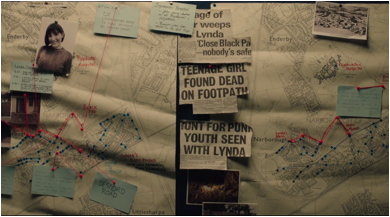
Figure 1: Trailer, Code of a Killer, ITV, 2015. Screenshot with link to YouTube video (Acorn TV).
Code of a Killer dramatised the real story of how Leicester University Professor Alec Jeffreys’s DNA fingerprinting transformed the way police investigate crime, arguably the most important contribution to criminal investigation ever made. In the mid 1980s, an investigation into serial murders of Leicestershire schoolgirls had broken down, police resources exhausted with no suspect, to the anger of the victims’ parents and their communities. The Superintendent heading the case chanced upon a newspaper article about Jeffreys’s research and persuaded him to, reluctantly, help the police with their enquiries by applying his work in progress—on human beings’ unique DNA fingerprints—to the case. Five thousand men were fingerprinted, the killer was found, and the nature of forensic crime investigations changed forever. It is hard to imagine a higher profile impact case study. The significance is to do with the invention of a new formula for others to apply.
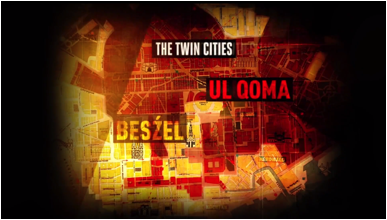
Figure 2: “Besźel Tourist Orientation.” The City and the City, BBC, 2018.
Screenshot with link to YouTube video (BBC).
In City and the City, an adaptation of the novel by China Miéville, two cities on the edge of Europe coexist in the same space, sharing streets and buildings. But it is illegal for the inhabitants of each city to acknowledge that they have seen one another, and this is enforced by secret police who investigate any breach of this socialised unseeing. The story works as a metaphor for how our ways of thinking enable us to see “unsee” people, places and ideas which coexist in the same space. In academia, this has been most notably theorised by Pierre Bourdieu’s concept of “field”, whereby social actors situate themselves in different domains within the same social space. The significance here is about seeing new connections, a new way of working across hitherto separate domains.
So, significant practice research might produce, for others to apply, a transferable way of working as media practice researchers that we might think of as a version, albeit very different, of a “code”. Whilst we are not working in laboratories in white coats looking at DNA, we might be working in studios, on sets or in other production spaces where experiments in our practice lead to new ways of working. Or we might provide research findings that enable us to see the previously unseen, through interdisciplinary approaches most commonly:
Many of the methods associated with autoethnography can be applied to practice-based research, including reflexive ethnographies, narrative ethnographies, and layered accounts […]. [T]he practitioner-researcher can more easily distinguish and recognise the effects of the “trouble” of the unfamiliar “special motive” on his/her familiar activity. […] Similarly, by distancing the practitioner-researcher both in time and perspective (the latter by applying post-textual analysis) from the creative practice, s/he is able to identify patterns in the creative process and narrative artefacts that may not have been apparent while the activity was underway. Combination of methodological approaches, therefore, provides a more robust approach to examination of creative practice than reflection or post-textual analysis provide on their own. (Skains 88)
A third version of significance is, perhaps, the one which has been presented the most successfully, to date, by media practice researchers and relates to the idea of giving voice to previously silenced groups through these more ethnographic forms of media production. In a recent collaboration between the award-winning filmmaker researcher Sue Sudbury and two students, Xue Han and Charlie Mott, an animated film, Hunger by the Sea, was co-created with users of a local food bank (Han et al.). The “writing up” this project for both media practice and education research domains was influenced by Johnny Marr and Maxine Peake’s representation of the stories of Manchester homeless, The Priest (2017). Its artistic representation of ethnographic listening and “thick description” of homelessness in media practice is the kind of research mode (albeit not conceived as academic) adopted in the articulation of methodology, with equal weighting to the existing work in the formal research field:
“It’s about asking questions,” says Peake. “Everybody’s in a situation, everybody has a story. It’s about finding out why. We take things at face value, don’t we? You form an opinion about something immediately, but you ought to step back a bit. Take in the vista first.” (Peake qtd. in Harris; emphasis in original)
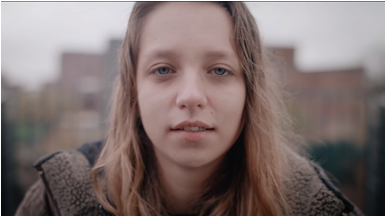
Figure 3: Johnny Marr and Maxine Peake, The Priest, 2017. Screenshot with link to YouTube video.
The intentions behind The Priest, according to its creators, are to dispel shorthand, stereotypical responses to rough sleeping after reading a diary published in The Big Issue and hearing about other experiences that defy expectations. Hunger by the Sea attempts a similar “stepping back a bit”. The broader themes emerging from the ethnographic work with the food bank users whose voices are heard in the film were the local context (transitional labour and poverty out of season), the choice between using the food bank with the “shame” attached and the risks and further shame associated with stealing, pride and the reluctance to “ask for help” (and the othering of that as a character trait), and the sense that the general public ascribe blame to the poor when our participants are victims of circumstance. In this way, the film’s representation of the situation—letting the participants’ stories offer an alternative to dominant misconceptions without any narration or editorial voice—shares an approach, broadly, with The Priest, a distinctive shift in thinking, achieved through an original media practice process that could not have been replicated by interviews and focus groups. Significance here is about enabling marginalised voices to be heard through the research.

Figure 4: Hunger by the Sea (Sue Sudbury, 2018). Image Sue Sudbury and Xue Han.
Screenshot with link to film.
Rigour
In an editorial for Journal of Media Practice, John Adams suggested:
Practice researchers should be in constant dialogue so that “issues around modes and methods of practice research and documentation” can be clarified “through the prism of specific research projects”. (Adams and McDougall 102)
Working with the Media, Communications and Cultural Studies Association (MeCCSA), the journal has convened an annual joint media practice symposium with themes designed to facilitate this dialogue: “Articulating Media Research”; “Peer Review and Dissemination”; “Media Practice and the Field”; “Post-Screen Practices and Cultures”. Each symposium leads to the publication of a themed issue of MPE, along with a second guest-edited publication each year that disseminates the work of a practice research project or network. At the symposium, in the pages of MPE, and in other fora (including the 2018 Creative Practice Symposium organised at University College Cork and a similar event the year before convened by the Centre for Excellence in Media Practice at Bournemouth University), a set of principles for “as research” have been developed, driven by the contribution of Craig Batty most prominently, as follows.
Conventional research approaches are important, because practice researchers are working with different interpretations of them rather than completely looking awry, as at the very core of the matter, media practice research is still research and not “just” professional practice. On the question of what practice as research should look, sound or feel like, the answer is that it should be different to what it would have looked, sounded or felt like before it came into the academy. In workshops with practice researchers, Craig Batty and Mark Readman ask these kinds of questions—If the practice has not changed then how can it be conceived as research? What is the discovery? If we do accept the need to write about practice then should the creative work come first? Always both, together, they argue, to avoid any sense that the practice is only data collection of sorts, when clearly it should be viewed as methodology. In this way, media practice research is designed for/structured around/approached as being about the creation of a new work from the outset. The practice is what drives the research (philosophically); the methods for executing this can and should differ, just as for any discipline. Methods are used to enable the practice to happen and to ensure that the practice is research. These might include reflection, action research, narrative enquiry, textual analysis, literature synthesis, interviews, focus groups … it could be anything (Batty, “Presentation”; Readman, “Presentation”).
Whether a research output is practice-based or practice-led depends on the order in which you do things; it depends on what you want to find out and create on the basis of knowledge discovery. Practice-based research will either consist of, or include, media practice itself, whereas practice-led research will generate knew knowledge about media practice and, to that end, the research will include practice in its methodology, but the outcome may or may not.
Other ways of capturing and articulating the distinctive methodological rigour of media practice research have been recently described as “cognitive two-steps” (Gibson), production-based enquiry as method-led research (Kerrigan) and “soft ethnography” (Middleweek and Tullock). These ways of seeing media practice research share some key principles. There is an interest in presenting/re-presenting (differently) how researchers “investigate and give interpretative shape to dynamic circumstances” (Gibson xii), resonating with my own recent work with John Potter on “Dynamic Literacies” (Potter and McDougall). The reflexivity at stake in this kind of research—its “soft ethnography”—concerns a different way of thinking about tacit knowledge and affect and documenting the challenges in translating these, “rewriting methodologies with qualities of attention” (Glisovic 230) to embrace the inconvenient truth that “[d]oing and thinking become one inextricably linked action that is not merely difficult to explain but which perhaps should not be explained in the traditional sense of explaining” (Knudsen qtd. in Middleweek and Tulloch 242).
The recent Disrupted Journal of Media Practice, a special issue of the Journal of Media Practice/Media Practice and Education edited by Coventry University’s Centre for Disruptive Media and the Disruptive Media Learning Lab, attempted to go further to deconstruct and reassemble “from within” the idea of an academic journal stretching its limits to publish media practice research, as it is “important to experiment with how media practice, in rethinking research as practice, could also be involved in disrupting the way we mediate this research” (Shaw et al. 2). To this end, three questions were posed by the journal to itself:
- How is media practice disruptive of and re-performing the way we do scholarly communication and education?
- How can JMP reconfigure (the politics of) its own practice?
- What should a disruptive “journal” of media practice look/sound/feel like? (Shaw et al. 2)
The published “outputs” and guest editorial for the Disruptive issue were dialogic and discursive. Consider some of the interactions here, from Craig Batty, Leo Berkeley and Smiljana Glisovic’s dialogue on the “contentious spaces of media practice research”:
If we consider writing as a process of “thought in action” (i.e., ideas transcribed through language), what is the problem with screen and media practitioners having to produce a statement of research? Is writing the problem; or is the problem actually there being a lack of research? (Batty et al. 13)
In filmmaking as research, does it matter if the film that emerges from the research is unsuccessful? (17)
Are the artistic and scholarly spirits fundamentally at odds? Is artistic practice at odds with academic notions of research? Or is there a wonderful, entirely other kind of beast, that is the artist-researcher? (17)
The entire notion of “methodology” is contested by some creative practice researchers. Is there room to completely re-think/re-invent the very foundations of how we produce “new knowledge”, which may have nothing to do with a “sound methodology”? Perhaps it is a matter of having a more flexible definition of methodology; perhaps it is a matter of using another term that does not bring with it a series of assumptions that are not helpful to the researcher-practitioner. (14)
Though contentious for some, the notion that a research statement is required to accompany the creative work is important to me [Batty]. Discussing the background, contribution and significance of the research, not only does this communication of research give context to the creative work as an outcome of research, it also—crucially—ensures that the work can be understood by those outside of the discipline or those with limited knowledge of the form or genre. In this way, research is made explicit and transparent rather than veiled and open to questioning. In my view, and from my experience of working as a research leader in the creative practice space, leaving the research endeavour open to interpretation can be dangerous, if not damaging. (15)
Your responses to this working out and working through of questions of rigour will situate you on a continuum within the domain—between those who feel “the work” stands alone (and it is thus the responsibility of the reviewer to understand its status as research, just as an audience interpret a text as art without the obligation to anchor its meaning) and those who resist the notion that a requirement to write is a centring imposition.
Practice–Praxis
In concluding, it’s helpful to take a step back to reset the questions that practice researchers, doctoral, post-doctoral, supervisors and interdisciplinary newcomers should be asking at the start of a new project—what is the researcher’s practitioner identity about and what does s/he want to discover through this research? What is the gap in the field of practice that the research is going to reduce? Who are the stakeholders in this practice research and why does it need to be practice for them to benefit? What is the status of the practice in the research—does it cut across all elements, or is it only method or an element of the project or the mode of output? And then how will the findings be shared—as practice, or a written thesis or article about the practice or a combination? Once those are clear, then we can progress to the justification for the wider academic world, and beyond.
There is no consensus, yet, on the answer to render obsolete “just practice”. And this article has, admittedly “lumped together” media practice research and sidestepped the differences between its constituent parts which may still be greater than their sum, as Batty and Kerrigan also observe, as when they set out to “put a stamp on what screen production research is and looks like, to provide a global benchmark of sorts […] and move the discipline forward” (3). They also argue that screen media production requires this intervention more because it has a “less developed set of literacies” than, for example, art, design, creative writing and performance (3).
However, it’s surely positive that at least a partly formed, contested and staggered framework for articulation is emerging from the field, to apply, adapt, argue against, resist or refute. This article has set out to capture, synthesise and present a set of principles for media practice research as original, significant and rigorous, generating new knowledge within and as a domain of research and articulating transferable impact with social justice objectives. This is the community of praxis responding to the external drivers to play the game on its own terms, establishing its own criteria for the work it does, collegiately, inclusively and respectfully.
Discuss.
References
1. Adams, John, and Julian McDougall. “Revisiting the Evidence: Practice Submissions to the REF.” Journal of Media Practice, vol. 16, no. 2, 2015, pp. 97–107, DOI: https://doi.org/10.1080/14682753.2015.1041803.
2. Ahmed, Sarah. Living a Feminist Life. Duke UP, 2017, DOI: https://doi.org/10.1215/9780822373377.
3. Batty, Craig. “Presentation to Ed D Creative and Media.” Bournemouth University, 6 Oct. 2017.
4. Batty, Craig, et al. “A Morning Coffee in Melbourne: Discussing the Contentious Spaces of Media Practice Research.” The Disrupted Journal of Media Practice, vol. 19, no.1, 2018, pp. 8–17, DOI: https://doi.org/10.1080/14682753.2017.1362166.
5. Batty, Craig, and Susan Kerrigan. Screen Production Research: Creative Practice as a Mode of Enquiry. Palgrave Macmillan, 2018, DOI: https://doi.org/10.1007/978-3-319-62837-0.
6. Bell, Desmond. “The Primacy of Practice: Establishing the Terms of Reference of Creative Arts and Media Research”. Batty and Kerrigan, pp. 47–66, DOI: https://doi.org/10.1007/978-3-319-62837-0_4.7. “Besźel Tourist Orientation – The City and the City – BBC Two.” YouTube, uploaded by BBC, 27 Mar. 2018, youtu.be/CdalaDaC6ZA.
8. Bourdieu, Pierre. Outline of a Theory of Practice. Translated by Richard Nice, Cambridge UP, 1977, DOI: https://doi.org/10.1017/CBO9780511812507.
9. The City and the City. Directed by Tom Shankland, BBC, 2018.
10. Code of a Killer. Directed by James Strong, ITV, 2015.
11. “Code of a Killer Trailer.” Uploaded by Acorn TV, YouTube, 15 Feb. 2017, youtu.be/0qtcpByV4nk.
12. Eddo-Lodge, Renni. Why I’m No Longer Talking to White People about Race. Bloomsbury, 2017.
13. Gibson, Ross. “Foreword: Cognitive Two-Steps”. Batty and Kerrigan, pp. v-xiii.
14. Glisovic, Smiljana. “The Naïve Researcher Resisting Methodology; A Ph.D. Experience.”Batty and Kerrigan, pp. 213-232, DOI: https://doi.org/10.1007/978-3-319-62837-0_13.
15. Han, Xue, et al. “Hunger by the Sea: Partnerships in the Brave Third Space.” International Journal for Students as Partners, vol. 2, no. 2, DOI: https://doi.org/10.15173/ijsap.v2i2.3493.
16. Harris, John. “Interview: Johnny Marr and Maxine Peake: ‘You can’t avoid homelessness in Manchester. It touched us both’”. The Guardian, 11 Dec. 2017. www.theguardian.com/culture/2017/dec/11/johnny-marr-and-maxine-peake-you-cant-avoid-homelessness-in-manchester-it-touched-us-both.
17. Higher Education Funding Council (HEFC). Research Excellence Framework 2014: Overview Report by Main Panel D and Sub-Panels 27 to 36. Jan. 2015, www.ref.ac.uk/2014/media/ref/content/expanel/member/Main Panel D overview report.pdf.
18. Hunger by the Sea. Directed by Sue Sudbury, Sequoia Films, 2018.
19. “Johnny Marr and Maxine Peake – The Priest [HD].” YouTube, uploaded by Johnny Marr, 11 Dec. 2017, youtu.be/t9N1gulWafE.
20. Kerrigan, Susan. “A Logical Explanation of Screen Production as Method-Led Research.” Batty and Kerrigan, pp. 11–27, DOI: https://doi.org/10.1007/978-3-319-62837-0_2.
21. Kerry, Matthew, and Georgia Stone. Introducing Media Practice: The Essential Guide. Sage, 2018.
22. Knudsen, Eric. “Method in Madness: A Case Study in Practice Research Methods.” Batty and Kerrigan, pp. 121–142, DOI: https://doi.org/10.1007/978-3-319-62837-0_8.
23. Middleweek, Belinda, and John Tulloch. “Afterword: Tacit Knowledge and Affect: Soft Ethnography and Shared Domains.” Batty and Kerrigan, pp. 233–248, DOI: https://doi.org/10.1007/978-3-319-62837-0_14.
24. Moon, Jenny. A Handbook of Reflective and Experiential Learning. Routledge, 2004.
25. O’Brien, Dave, and Kate Oakley. Cultural Value and Inequality: A Critical Literature Review. Arts and Humanities Research Council, 2015, ahrc.ukri.org/documents/project-reports-and-reviews/cultural-value-and-inequality-a-critical-literature-review.
26. Potter, John, and Julian McDougall. Digital Media, Education and Culture: Theorising Third Space Literacy. Palgrave Macmillan,2017.
27. The Priest. Directed by Johnny Marr and Maxine Peake, 2017.
28. Readman, Mark. “Presentation to Centre for Excellence in Media Practice.” Journal of Media Media Research Forum, Bournemouth University, 2017.
29. ---. Review of Screen Production Research: Creative Practice as a Mode of Enquiry, edited by Craig Batty and Susan Kerrigan. Media Practice and Education, vol. 19, no. 2, 2018, pp. 223–226, DOI: https://doi.org/10.1080/25741136.2018.1472969.
30. Skains, Lyle. “Creative Practice as Research; Discourse on Methodology”. The Disrupted Journal of Media Practice, vol. 19, no. 1, 2018, pp. 82–97, DOI: https://doi.org/10.1080/14682753.2017.1362175.
31. Shaw, Jonathan, et al. “Disrupting the Journal of Media Practice.” Media Practice and Education vol. 19, no. 1, 2018, pp. 1–7, DOI: https://doi.org/10.1080/14682753.2017.1362167.
Suggested Citation
McDougall, Julian. “But HOW Is It Not Just Practice? Or Do I Not Know Practice as Research?” Alphaville: Journal of Film and Screen Media, no. 17, 2019, pp. 26–37. https://doi.org/10.33178/alpha.17.02.
Julian McDougall is Professor of Media and Education and Head of the Centre for Excellence in Media Practice at Bournemouth University. He is Principal Fellow of the Higher Education Academy, edits the journal Media Practice and Education, leads a Doctoral programme in Creative and Media Education and convenes the annual International Media Education Summit. He is the author of a wide range of articles, research reports, books and chapters in the fields of media, practice, education and literacy.





